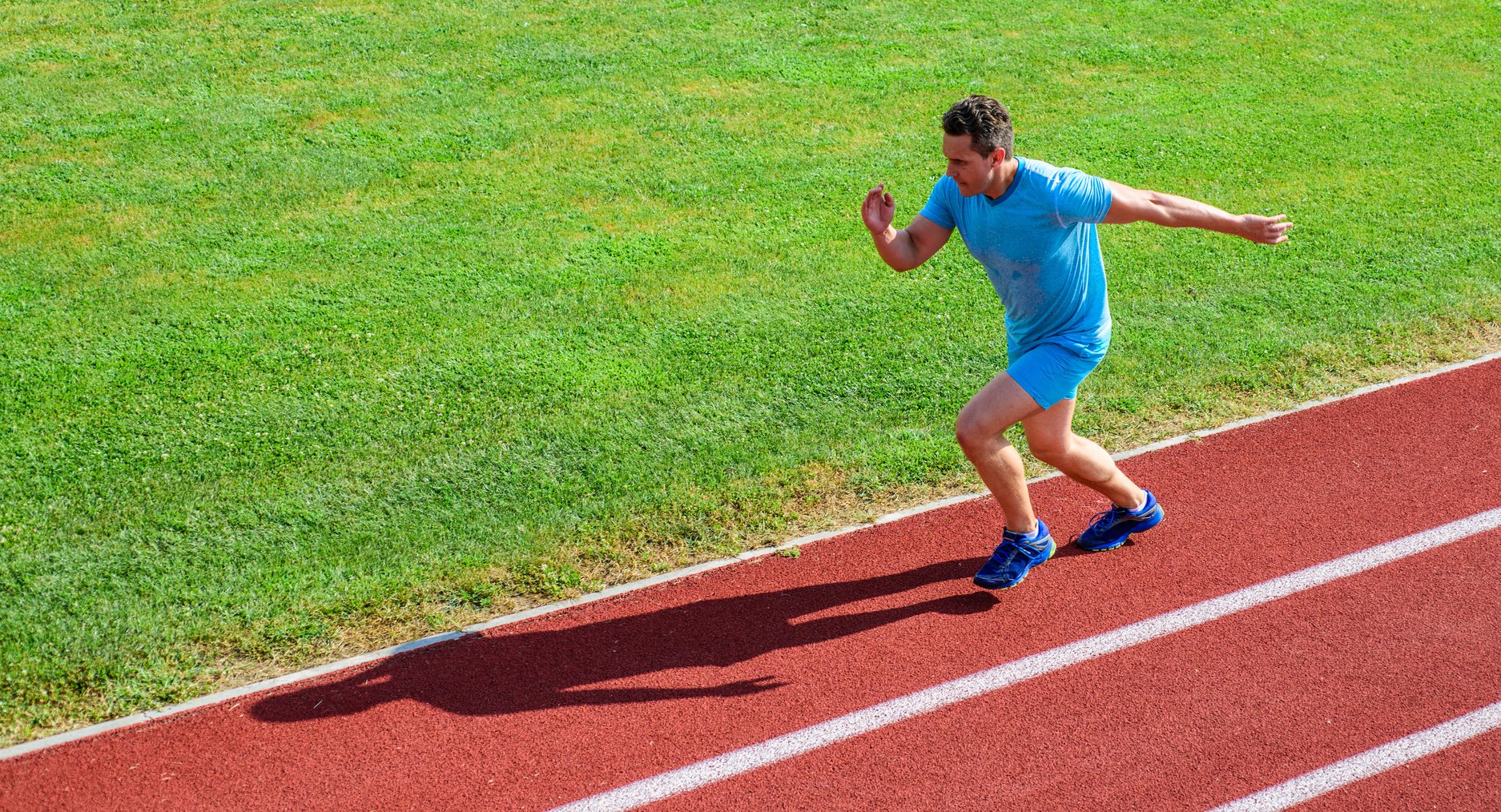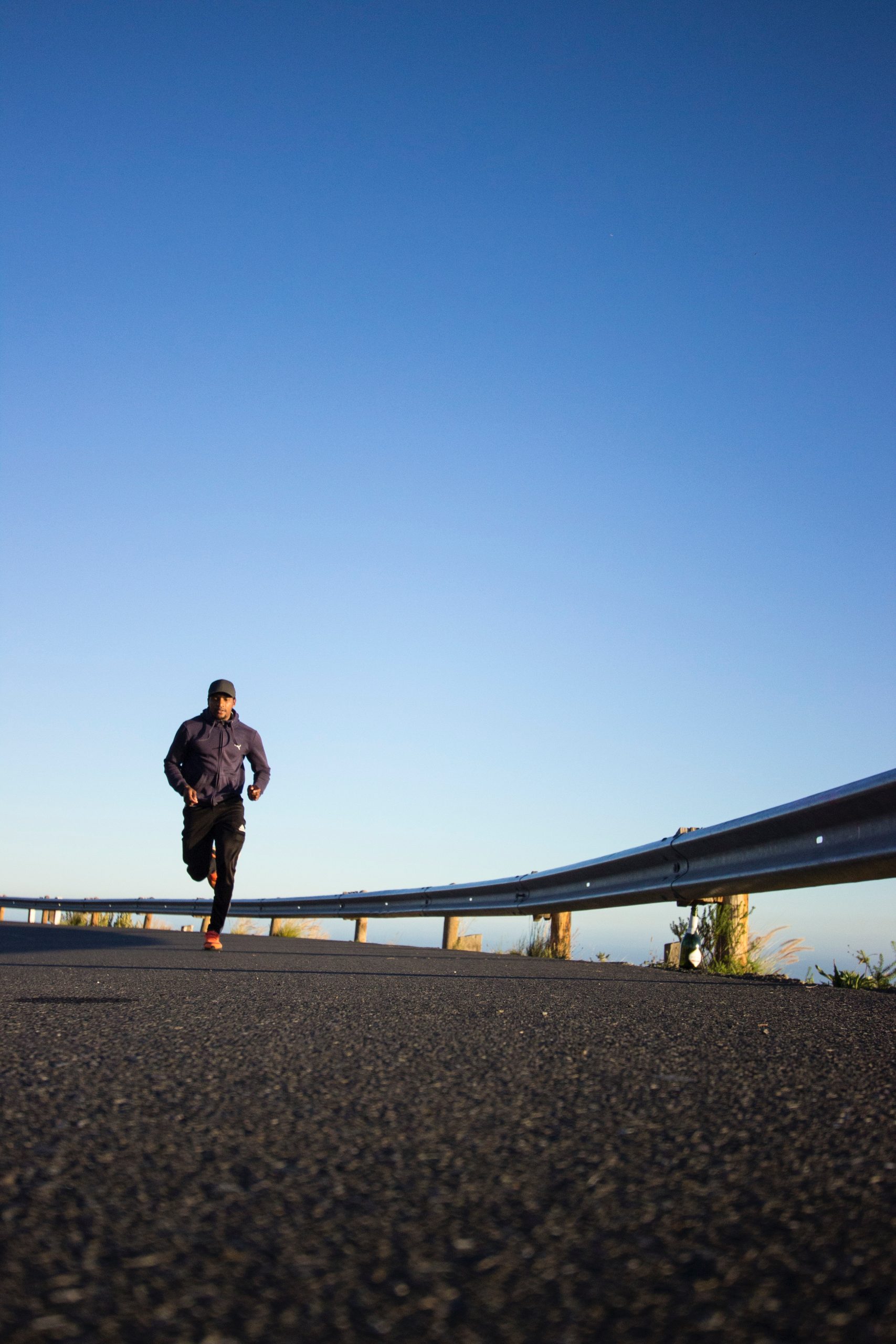I’ll be real with you—I used to think aqua jogging was a joke.
Running in water? Come on.
I pictured retirees in swim caps doing gentle pool aerobics, not something a serious runner would touch.
That was before shin splints nearly wrecked my marathon prep.
I was staring down a month or more of no running. Stress fracture looming. The panic of losing all that fitness I’d worked for? That hit hard.
Then a fellow runner said, “Try pool running.” I laughed. Then I did it.
And let me tell you—five minutes into my first deep-water jog, I was humbled.
I was sucking air, legs burning, core shaking. It was like running with a parachute in a gravity-free zone.
No impact, but somehow all the effort. I left that pool completely gassed—and totally convinced.
I stuck with aqua jogging for that whole injury block.
And when I got back to land? I hadn’t lost a step.
If anything, I came back stronger—especially in my hips and core.
I now use it with my athletes. I use it when I’m dinged up. And sometimes, even when I’m not—just to give my body a break from the pounding.
So yeah, consider this your guide to one of running’s best-kept recovery secrets.
Let’s get to it.
What Even Is Aqua Jogging?
Aqua jogging (or deep water running, pool running—call it what you want) is exactly what it sounds like: you run… in water.
But it’s not lazy laps or floaty fun. It’s work—done upright, in the deep end, with a running motion that mimics what you do on land.
You strap on a flotation belt (more on that below), stay vertical in shoulder-deep water, and drive your knees, pump your arms, and move like you’re out on the trail.
Except, instead of pounding your joints into the pavement, the water cushions every step. No impact. All resistance.
Here’s the kicker: water has about 12 times the resistance of air.
So every “stride” you take in the pool forces your muscles to work against constant drag.
That means you’re not just keeping your cardio sharp—you’re building strength at the same time.
No treadmill. No pounding. No excuses.
Talk about the perfect cross training option for runners.
Why Runners Shouldn’t Sleep on Aqua Jogging
Most runners only discover pool running after an injury.
But honestly? You don’t have to wait until your shins or knees revolt.
Here’s why this belongs in your toolbox:
1. It Saves Your Fitness When You Can’t Run
This is the big one. If you’re sidelined, aqua jogging can literally preserve your aerobic engine.
Don’t take my word for it. One study showed runners who swapped six weeks of running for aqua jogging had no loss in VO₂ max, 5K times, or lactate threshold.
That’s not just “maintained”—that’s holding peak performance while completely off land.
Another study? Injured athletes improved their 2-mile time trial after six weeks of pool running.
Read that again: they got faster without touching pavement.
I’ve seen it firsthand—athletes return from stress fractures or tendon flare-ups still sharp, because they aqua jogged like they meant it.
So if you’re injured or even flirting with overuse, deep water running is your get-out-of-jail-free card.
2. It’s Zero Impact, Not Zero Effort
This isn’t lazy cardio.
With proper form (and a solid effort), aqua jogging can be as brutal as any interval session.
You’re fighting resistance the entire time, and the water gives no free passes.
Want to make it hurt (in a good way)? Crank up the cadence. Try sprints. Do intervals. I’ve done workouts in the pool that left me more wiped than land sessions.
3. It Builds Core, Hips, and Stability
You don’t realize how much your stabilizers get involved until you’re running in water. Your abs fire like crazy to keep you upright. Your hips? They’re working overtime.
Especially for runners who’ve had issues with IT band, hip drop, or lower back tightness—this is gold.
I’ve had runners come back from pool-running blocks saying, “My stride feels more controlled now.”
That’s no accident. The water builds strength where runners tend to be weak.
What You’ll Need (Gear Basics)
- Flotation belt: Non-negotiable if you’re new. Keeps you upright and lets you focus on form instead of treading water. Think of it as your training wheels.
- Goggles: You’ll be staring underwater or at tiles. Might as well see clearly.
- Patience: Yeah, it can get boring. But so does injury rehab. Choose your battle.
Pro tip: Add music (waterproof headphones), podcasts, or count intervals out loud. It helps keep your brain engaged.
Who Aqua Jogging’s Really For
Let’s get this out of the way — aqua jogging isn’t just for runners on the injured list.
Yeah, it’s a go-to rehab move. But it’s also a damn smart tool for anyone who runs.
Period.
I’ve used it. I’ve coached runners who used it.
And I’ve seen it work for beginners, Boston qualifiers, post-op masters athletes, and even trail freaks stacking 100-milers.
If you run — and especially if you break down easily or want more mileage without breaking — water running should be on your radar.
Here’s who it really helps…
1. Injured Runners Who Can’t Run on Land
This is the obvious one. Got shin splints, a stress fracture, cranky IT band, or post-op knees? Deep water running is your best friend.
I always tell my athletes:
“If you can’t run on land, run in water.”
Seriously — deep water mimics real running better than anything else.
The motion’s close enough that your brain and muscles stay in sync.
Unlike cycling or swimming, it actually keeps your running pattern firing. And there’s zero impact, so you’re not smashing already-inflamed tissues.
2. Older Runners & Folks With Joint Issues
If your knees or hips bark at every step, but your heart’s still in it — get in the pool.
Water takes a load off your joints. Literally. I have a 70-year-old client with two replaced knees who water runs 3x a week like clockwork.
She can’t handle the pavement grind anymore, but she can still chase that runner’s high in the pool.
Older runners, arthritis warriors, or anyone dealing with long-term joint wear — this is how you keep moving without wrecking yourself.
Even if you’re not injured — but you’re in that “gravel in the knees” stage of life — aqua jogging keeps the engine running.
3. Overweight or New Runners Starting From Scratch
Let’s be honest — starting to run when you’re carrying extra weight is tough.
It’s not just motivation — it’s physics.
More impact. Higher injury risk. More pain.
That’s where the water steps in.
The buoyancy supports your body so your joints aren’t getting crushed.
But your muscles and heart? They still get a workout.
You’ll burn calories, break a sweat, and move freely — even if land running isn’t doable yet.
In one study, obese adults aqua jogged twice a week for 6 weeks. They lost fat, shrank waistlines, boosted aerobic capacity, and felt better across the board — all without pounding their joints.
4. Healthy Runners Who Want Smart Cross-Training
No injury? Still run in the pool.
Aqua jogging is one of the best ways to build volume or intensity without upping injury risk.
Think:
- Deload weeks
- Recovery days after a hard race
- Extra aerobic work without leg pounding
- Keeping niggles from turning into layoffs
If you’re dealing with mild soreness or something that feels “on the edge,” a 45-minute aqua run is a smart sub for a land workout.
Pro runners do this all the time. They’re not lazy — they’re smart. You want to train hard and stay healthy? Add water miles.
5. Trail Runners & Ultrarunners Building Volume Without Breakdowns
If you’re doing big mileage — like 50K+, 100-milers, stage races — you know the grind. Long runs stack up.
The legs don’t always recover fast enough. That’s when aqua jogging becomes secret training sauce.
I’ve seen ultra folks double up:
Or use pool days to replace one medium-long run a week. It keeps the aerobic engine roaring without trashing your legs.
Aqua Jogging vs. Land Running: Same Engine, Different Terrain
Let’s get one thing straight: aqua jogging isn’t a lesser version of running—it’s just a different thing.
If you go in expecting road-runner vibes, you’ll be frustrated.
But if you use it for what it is? It can be one of the smartest tools in your training toolbox.
Here’s how they stack up—no fluff, just straight talk:
Impact & Injury
Land running pounds your body with 2–3x your bodyweight every step.
That pounding’s great for building toughness—but it also wrecks you if you’re already hanging by a thread.
Aqua jogging = zero impact. You’re still moving like a runner, but without beating your bones and joints to death.
That’s why it’s a go-to for injured runners, and honestly? It saved my training cycle once when my shins went on strike.
But don’t get too comfy—you’re not building bone density or tendon strength in the pool.
So when you return to land, ramp back up slowly.
Your cardio might be ready to rock, but your lower legs and joints need time to catch up.
Cardio & Effort: Why It Feels Weird but Still Works
Here’s the mind-bender: you might be gasping like it’s tempo pace… but your heart rate monitor says “meh.”
That’s real. Studies show heart rates run 10–15 beats lower in water, even at the same oxygen demand.
It’s the water’s pressure helping circulate blood more efficiently. So your ticker doesn’t have to work as hard.
I tell my athletes: go by breathing, not by numbers.
If you’re breathing like it’s threshold pace, that’s the effort—even if your HR watch says “easy jog.”
The upside? Done right, deep water running can match land running in VO₂ max gains.
Yeah.
You’re not losing fitness in the pool—you’re just working through different feedback.
Pro tip: Ditch the pace obsession. Tune into RPE. If it feels like a solid tempo or interval on land, it counts—even if you’re treading water.
Mechanics & Speed: Drop the Pace Obsession
Speed? Distance? Forget about it. In the pool, you’re not racing the clock—you’re racing the resistance.
Unless you’ve got an underwater treadmill (hello, fancy), you’ll be jogging in place or inching down a lane like a snail.
And that’s fine.
Your stride will feel weird: higher knees, more arm swing, no toe-off.
But guess what? That forces good habits like a quick cadence and upright posture. You literally can’t overstride in water—it won’t let you.
Embrace it. You’re not training for GPS pace—you’re training your form and engine in a zero-impact zone.
Muscle Activation: Upper Body Surprise Party
Land running is leg day. Aqua jogging? Full-body grind.
That water resistance pulls your arms, shoulders, back, and core into the game.
It’s why your obliques and upper traps might feel roasted after your first session.
Even your feet and ankles are working to stay aligned and resist the flow.
But you won’t hit your calves and quads the same way, since there’s no ground to push off.
That’s why, when you come back to land, don’t expect to jump into a hard track workout on day one.
Your lungs might be ready. Your lower legs? Not yet.
Use it to build total-body durability—but don’t expect your calves to be race-ready unless you reintroduce impact gradually.
Boredom & Mental Toughness: Tiles Don’t Talk Back
Let’s not sugarcoat it—aqua jogging can be boring as hell.
No breeze. No scenery. Just water, lane lines, and your own thoughts. But that mental grind? It’s a feature, not a bug.
This is where you build grit. If you can crush 60 minutes of pool running with nothing but your breath and waterproof earbuds, you’re mentally tougher than half the field.
That said, gear helps. **Underwater headphones, a bungee tether, a good podcast—**these can save your sanity.
Honestly, if you survive the monotony of pool running, road racing starts to feel like a party.
Progress Tracking: Forget Pace—Track Time & Effort
Land runners love their splits. In the pool? It’s all about time, effort, and heart rate (loosely).
No GPS, no mile markers. Just raw effort.
Maybe the first week, 20 minutes fries you.
A few sessions later, you’re cruising at 45 and throwing in hard intervals.
You’ll feel progress through:
- Better cadence
- Longer durations
- Less fatigue
- Quicker recovery between efforts
Some folks use HR monitors—just remember, your “zone 3” in the pool may look like zone 2 on your watch. That’s normal.
You’re not logging miles—you’re logging commitment. And that counts.
Aqua Jogging Gear: What You Actually Need
Let’s be real—one of the best parts of aqua jogging is that you don’t need a whole garage full of gear.
You’re not training for a triathlon. You’re just trying to stay in shape (or come back from injury) without wrecking your body.
That said, a couple key tools will make or break your experience in the pool.
Here’s what you need, why it matters, and when you can skip the extras.
The Flotation Belt: Don’t Get In the Pool Without It
If you’re only buying one thing for aqua jogging—make it the belt.
This isn’t about making things easier. It’s about doing the workout right.
A good flotation belt keeps you upright, lets you mimic a real running stride, and spares you from flailing like you’re drowning.
You’re here to run, not tread water for survival points.
Think of it as the pool version of a running shoe. Without it, your form goes to hell.
With it, you can focus on drive, turnover, posture—like you would on land.
What to Look For:
- Comfortable foam that wraps around your waist
- Adjustable strap (not too tight, not loose enough to ride into your armpits)
- Popular brands: AquaJogger®, Speedo, TYR—they’re all solid
Aquatic Shoes: Nice to Have, Not Need-to-Have
Let’s talk footwear. Some folks use water running shoes—lightweight, designed to drain, sometimes with fins or resistance blades.
They add drag, increase resistance, and can fire up your legs in a good way.
But do you need them? If you’re doing deep water running where your feet never touch bottom—nope. I usually go barefoot. Feels cleaner, simpler, and just one less thing to fuss with.
That said, there are times shoes make sense:
✅ When to Wear Water Shoes:
- Shallow water running: If your feet graze the floor, shoes help with grip and protection
- Resistance training: Some shoes create drag to boost effort—great if you want more cardio burn
- Foot support: A few options offer light arch support, which can be comforting if you’ve got foot issues (plantar fasciitis, flat feet, etc.)
I’ve used the Speedo Hybrid shoe—it’s basically a mesh sneaker that doesn’t soak like a sponge. I’ve also tried a finned version (name escapes me) that made my intervals feel like hill repeats. It was tough, but in a good way.
Aqua Jogging Gear & Safety: What You Actually Need
Let’s be clear—you don’t need a high-tech setup to get a killer pool run.
Belt, water, and a little grit are the only must-haves.
But if you want to level up the comfort, safety, and maybe your enjoyment? These add-ons are worth knowing about.
Safety First: Grip the Deck or Risk the Fall
If you’re doing pool drills that have you hopping in and out (or maybe mixing in dryland work), water shoes with grip are a smart investment.
Not just for traction—some public pools actually require them for hygiene if you’re doing fitness work.
My best advice? Start with just the belt and your bare feet. No need to overcomplicate it.
If, down the line, you want more resistance or stability, grab a pair of aqua fitness shoes. But don’t stress about it out of the gate.
Other gear you might want to add to your list:
Swimsuit (Duh—but choose smart)
You’ll be moving a lot. Ladies—go for a one-piece that doesn’t need constant readjusting.
Men—ditch the big, drag-heavy board shorts. Trunks or jammers (those snug shorts that look like cycling gear) are ideal.
Unless you want to add resistance, leave the water parachute at home.
Goggles (Optional—but handy)
You’re not swimming laps, but if you like to dip your head or mix in a few strokes, bring them along. I like having them just in case.
Music = Mental Fuel
Let’s be real—pool running can feel like watching paint dry if your brain’s not entertained.
That’s where waterproof headphones come in. Whether you’re team pump-up music or podcast junkie, having audio turns your workout from a grind into a groove.
Tether (Optional—but awesome for small pools)
This is basically a bungee cord that clips to your belt and the pool ladder or lane line.
It keeps you in place so you’re not drifting all over like a pool noodle in a hurricane. Super handy if your pool is short or crowded.
Waterproof Heart Rate Monitor
This is for the data nerds (no shame). Just know: your HR will read lower in water than on land.
A steady effort might clock 10–15 bpm lower. Don’t let it throw you—just adjust zones accordingly.
How to Aqua Jog With Form That Actually Transfers to Running
This isn’t freestyle. You’re not here to dog paddle or float around like a tourist.
You’re here to run—with intention.
Do it right, and you’ll come out stronger, smoother, and maybe even faster on land.
Here’s how to nail deep water running like a pro:
1. Get Upright
Strap on that belt. Float in the deep end. Let your body settle vertical—head above water, chest up.
Imagine a string pulling the crown of your head to the ceiling.
Slight forward lean? Fine. But don’t slouch or lean back like you’re in a pool recliner.
Posture is everything. Engage your core like you’re bracing for a light gut punch.
2. Mimic Real Running (Don’t Pedal)
This is the meat of the movement:
- High Knees: Bring each knee up toward your waist—higher than you would on land. Activate those hip flexors.
- Drive Foot Down: Think “step on an invisible box.” Your foot pushes down and slightly back under your center—like you’re trying to shove the pool floor away.
- Heel to Butt Recovery: At the bottom of your stride, your heel pulls up and back toward your butt. You’re firing glutes and hamstrings. It’s not just knee lift—it’s a full cycle.
- Cadence: Fast strides, short stride length. Aim for a rhythm. You won’t hit 180 steps per minute like land running, but shoot for 150–170. No lazy flailing.
If your stride feels like you’re pedaling a bike—you’re doing it wrong. Fix it.
3. Don’t Forget Your Arms
Too many people forget their upper body. But in the pool, arms = effort.
- Bend elbows ~90 degrees
- Pump forward and back from the shoulders
- Loose fists or flat hands, but no dog-paddling
- Elbows should move like pistons—not sweeping out like you’re swatting flies
More arm movement = more cardio = more calorie burn. Simple math.
4. Lock In the Details
- Head Forward: Pick a spot on the wall to look at. Don’t look down.
- Shoulders Relaxed: No hunching. Keep ’em down.
- Engage Core: Always. It keeps you balanced and protects your back.
- Foot Position: Neutral or slight flex. Let them move naturally through the water.
- No Wall Hugging: Rest if needed, but don’t live on the wall. Stay active.
5. Breathing: Match the Rhythm
One of the best parts about water running? Breathing feels easier. No dry air, no pounding steps.
You can breathe however feels natural—but syncing it to your arm swing helps:
- Try: Inhale for 4 arm swings → Exhale for 4
- When you do intervals, your breathing will automatically adjust. Let it.
Gauge Your Aqua Jogging Form
One of the easiest ways to tell if your aqua jogging form is on point? Ask yourself how it feels.
After a solid session, you should have that even burn in your quads, hammies, glutes, and maybe even your core.
Not just your quads on fire, not just your hamstrings cramping—all systems engaged.
If your quads are gassed early, you’re probably just doing a high-knee march, not driving down with power.
On the flip side, if your hamstrings are seizing, you’re probably curling your leg too much like a butt-kick machine.
Aim for balance. After a few rounds, it should start to click—it’ll feel like real running, just in slow motion. You’ll catch the rhythm: arms and legs driving, steady breathing, smooth groove.
Don’t sweat it if you feel awkward at first—everyone does. I felt like I was flailing around in zero gravity the first few times.
But once I got the hang of it? Game changer.
In fact, some runners say aqua jogging improved their land form because the water stripped away all the extra junk movement. You’re forced to focus on the essentials.
If you’ve got a coach or friend who can watch and give feedback, great. If not, hop on YouTube—type in “aqua jogging form” and check out some demos.
But honestly, if you’re following the pointers here, you’re on the right track.
Warm-Up and Drills in the Pool: Don’t Skip ‘Em
Would you jump straight into mile repeats without a warm-up? Nope. Same deal here.
Start with 5–10 minutes of easy jogging in the water—keep it chill, maybe 50–60% effort.
Use this time to dial in your form, shake off any stiffness, and get your brain in the game.
I like to do what I call a “form check jog”—low effort, but focused on posture and rhythm.
Then throw in a few water-based dynamic drills:
- High knees (drive them up strong)
- Butt kicks (quick and snappy)
- Straight-leg flutter kicks (grab the wall or a kickboard)
These warm up your hips, knees, and ankles—same as you’d do on land but with less pounding.
And hey—if you’re not a confident swimmer yet, it’s totally fine to spend your first couple sessions doing light swimming or water walking. Once you’re warm and comfy in the water, you’re ready to get to work.
Aqua Jogging Workouts for Every Level
Aqua jogging doesn’t have to be some endless, boring pool shuffle.
You can do intervals, tempos, fartleks—everything you’d do on land, just low-impact. Structured sessions keep your mind engaged and your heart rate honest.
Beginner Deep-Water Workout (30–35 min)
Goal: Build endurance, learn the motion, and get a solid cardio session—great if you’re injured or just new to the water.
Warm-Up (5–10 minutes)
- Easy jogging
- Stay upright, swing those arms like you’re running
- Focus on steady breathing and smooth motion
- Optional: a minute or two of water walking or gentle swimming
Do this cycle:
- 3 minutes medium effort – About 75–80%. Think “steady run,” not sprint. You should be working, but still able to breathe in rhythm.
- 1 minute hard effort – Push it! About 90–95%. Controlled power. Fast turnover. Visualize racing a rival down the home stretch.
- 2 minutes easy – Light effort, like your warm-up. Let the heart rate come down, stay relaxed.
That’s one 6-minute cycle.
Repeat for 4 rounds. (2–3 if you’re just starting out.)
Tip: During the “hard” minute, crank your arms like pistons and drive those knees down. Don’t just move fast—move with power.
You won’t get that same breathless burn as land intervals, but trust your effort. You’ll feel it in your RPE (rate of perceived exertion) and breathing.
Cool Down (5 minutes)
- Easy jogging or water walking
- Let your effort taper down
- Stretch your legs and arms gently in the water
This whole session clocks in around 35 minutes. Simple, effective, and beginner-friendly.
Once it starts to feel easy? Tweak the work intervals—try 4-minute steadies or 90-second surges.
Intermediate Pyramid Aqua Jogging Workout
Goal: Break up the monotony, build real endurance, and challenge your mental grit.
This one’s a ladder-style beast—aka the pyramid—where we crank up the interval lengths, hit the top, then fight our way back down.
Mentally, this thing is gold. Just when you think it’s getting harder, it does… and then, thankfully, it starts letting up. A little.
But let’s be real—the work doesn’t end until the last rep is done.
The Warm-Up (10 Minutes)
You know the drill: no skipping warm-ups. Especially in the water, especially before intensity.
Do 10 minutes of easy aqua jogging. Add in some dynamic arm swings, butt kicks, high knees—anything that wakes up the whole system.
Main Set: Pyramid Intervals
Here’s what it looks like. Push at ~85–90% effort on each “hard” part—this is 5K effort or a touch stronger.
- 1 min hard, 30 sec easy
- 2 min hard, 30 sec easy
- 3 min hard, 30 sec easy
- 4 min hard, 30 sec easy
- 4 min hard (yes, again), 30 sec easy
- 3 min hard, 30 sec easy
- 2 min hard, 30 sec easy
- 1 min hard — finish strong
That’s 20 minutes of hard effort plus 3.5 minutes of recovery. Add your warm-up and a cooldown, and boom—you’re at ~45 minutes total.
Cool Down (5–10 Minutes)
Jog easy in the water. Or mix it up with light swimming, especially backstroke or freestyle to loosen your arms. Stretch your quads and hamstrings using the pool wall if you’ve got one.
Pro Tip: If 4-minute reps are a bit much, just peak at 3 and back down. Want more? Go all the way to 5. Just keep the recovery short to keep the challenge high.
Advanced Fartlek Pool Workout (45+ Minutes)
Purpose: Simulate a hard track session, minus the pounding. This one’s for runners who want a real aerobic punch in the pool.
Think of this as your water version of 800m repeats. But without the shin splints.
Warm-Up (10+ Minutes)
Do your standard 10-minute jog—but throw in 3×20-second fast builds with 40 seconds moderate. These primes the system and let your brain know something spicy is coming.
Main Set – Fartlek Mayhem
This isn’t your grandma’s water aerobics. You’re bouncing between sprints, steady efforts, and recoveries. The randomness? That’s the point.
Sample Round (about 10 minutes):
- 1:00 sprint → 1:00 moderate
- 0:30 sprint → 0:30 moderate
- 0:30 sprint → 0:30 moderate
- 1:00 sprint → 1:00 moderate
- 2:00 steady-hard (like tempo pace) → 1:00 moderate
- 0:30 sprint → 0:30 moderate
- 1:00 sprint – finish strong
This round alone will leave you huffing. If you’re feeling fired up, repeat it twice (for 20 minutes of work), or three times if you’re out for blood. Rest for a minute or two between sets if needed.
Cool Down (10 Minutes)
Take your time here. You just lit the engine up—now cool it down gently. Try alternating 1 minute jog, 1 minute light swim. Focus on deep breathing. Stretch in the shallow end if you’ve got one.
Pro Reminder: Drink water. Just because you’re in a pool doesn’t mean you’re not sweating. Pool dehydration is sneaky.
How to Mix Pool Running Into Regular Training
You don’t need to be hurt to benefit. Here’s an example of how I might build it into a marathon week:
Sample Week
- Mon: Rest or swim
- Tue: Track session (land)
- Wed: 40 min easy pool run (active recovery)
- Thu: Medium-long run (land)
- Fri: 45 min pool intervals (cross-train w/ intensity, save legs)
- Sat: Easy run
- Sun: Long run
Two days in the pool, no mileage sacrificed, body stays fresher. This structure works great for injury-prone runners, heavy trainers, or older athletes who can’t hammer high-impact work day after day.
Final Thoughts
This might not be the most glorious part of your training journey. But it might be one of the most important.
“Training smart beats just training hard.”
Aqua jogging is the definition of that. It’s low-impact, high-return. Not everyone has the patience for it. But if you do? You’ll come out tougher, fitter, and sharper—mentally and physically.
So here’s your reminder:
- Put in the effort.
- Respect the work.
- Stick with it.
- And remember—you’re not starting over. You’re building forward.










